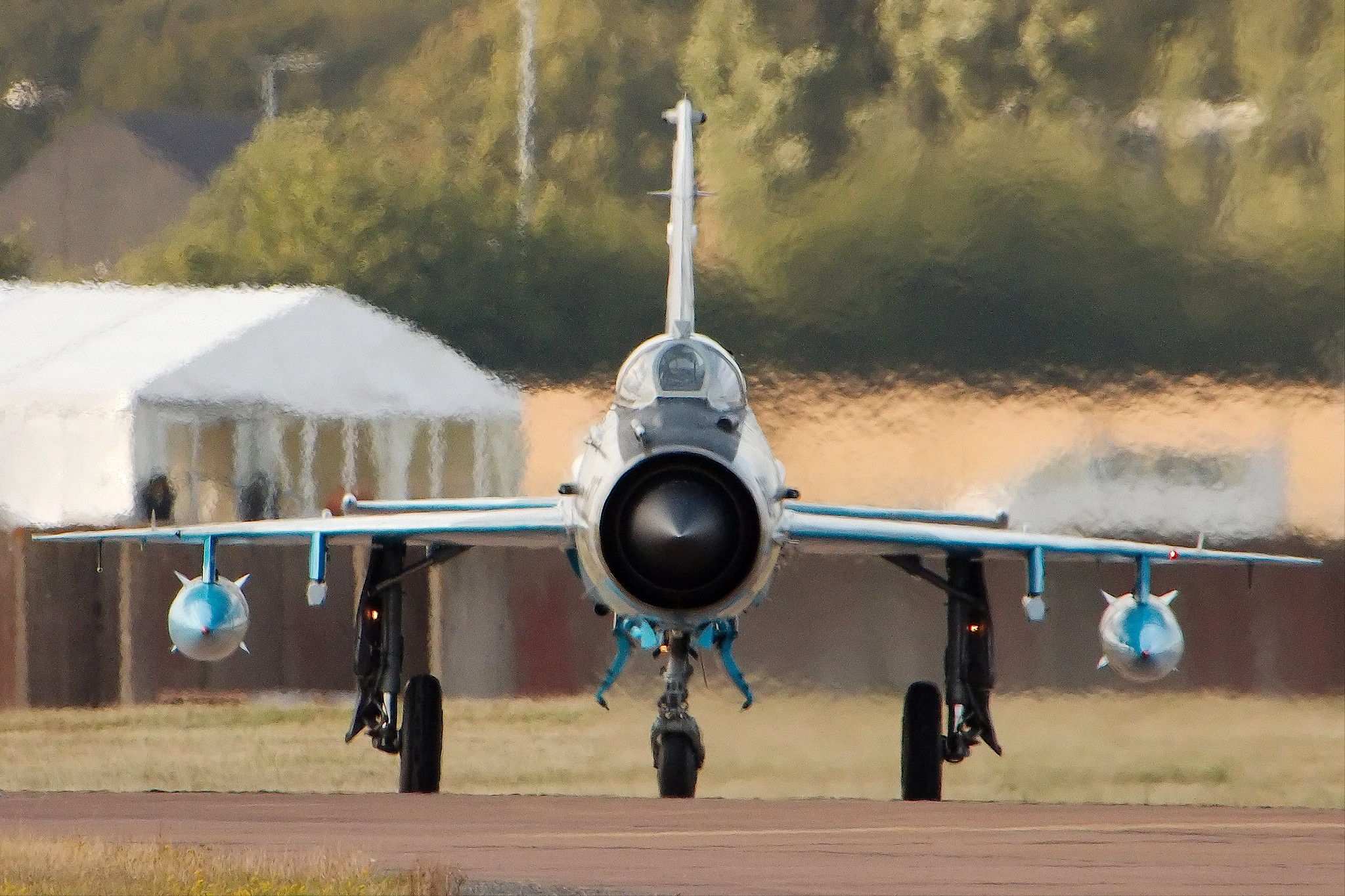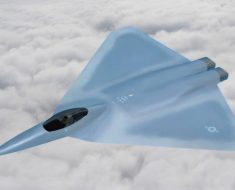Most combat aircraft developed in the 1950s are little more than historical artifacts today. However, there is one interceptor that was first seen in public in 1956 that remains in front-line service today: the Mikoyan-Gurevich MiG-21, better known in the west under its NATO reporting name “Fishbed”.
The MiG-21 was not perfect, but it was rugged, reliable and cheap. That’s why more than 10,000 were manufactured and why it’s sometimes called the “AK-47 of combat aircraft.” This is the story of one of the most-produced and longest-serving combat aircraft of all time: the MiG-21.
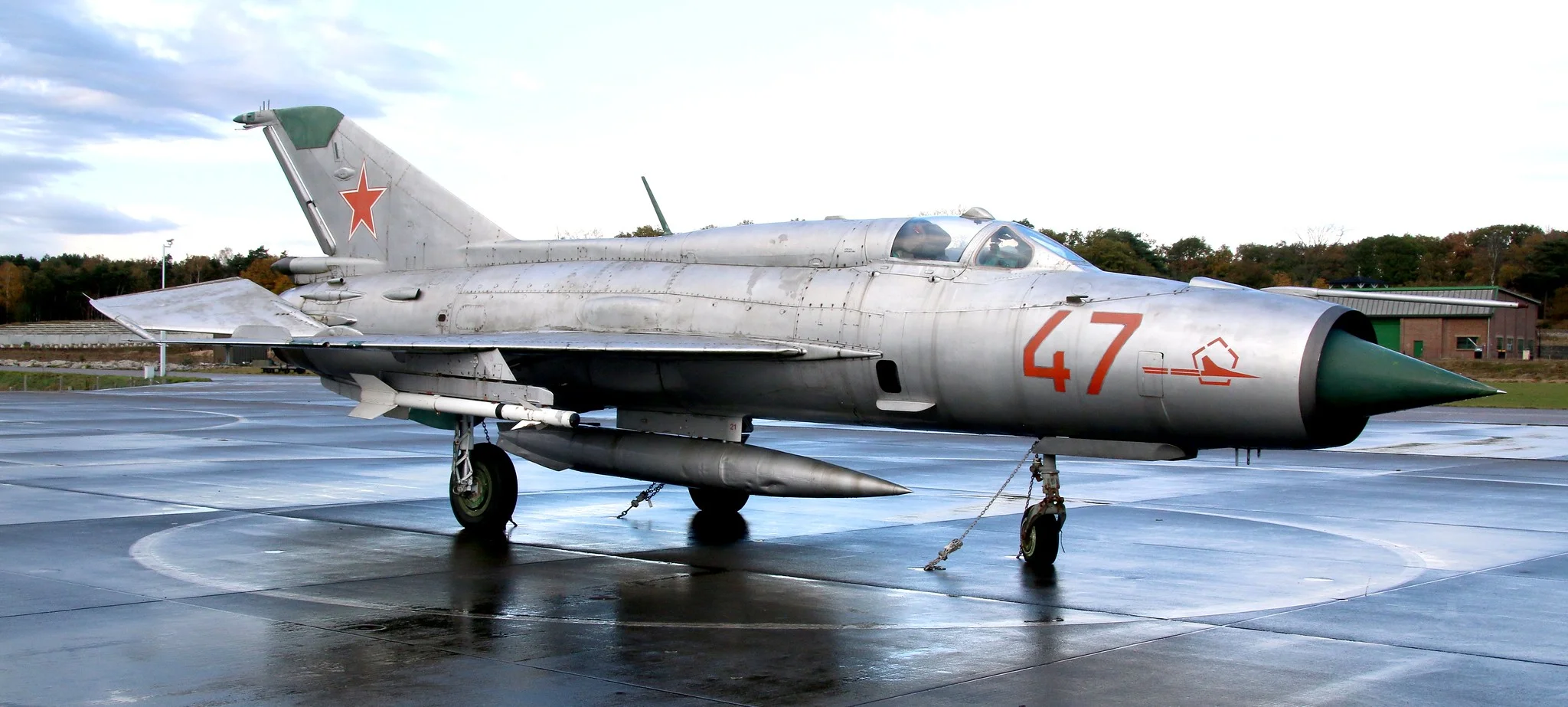
Contents
Development
The Russian Mikoyan & Gurevich Design Bureau, then known as OKB-155 (Experimental Design Bureau 155) produced the Soviet Union’s first jet, swept-wing, transonic fighter, the MiG-15 (NATO reporting name “Fagot”) in 1949.
Within a few years, an improved version, the MiG-19 (NATO reporting name “Farmer”) was entering service with the Red Air Force. However, MiG had already begun work on a much more radical interceptor.
Read More: Curtiss XP-55 Ascender – The Flawed Fighter
The formal design of what would become the MiG-21 began with the issue of a resolution of the Soviet Council of Ministers in September 1953 calling for a new single-engine jet capable of considerably higher performance.

Two possible configurations were considered by MiG. One was for an aircraft with a swept, tapering wing similar to that used on the MiG-19. The other was very different, including a delta wing swept at 57˚ but also including a conventional, horizontal tail.
After initial testing, the second configuration was chosen for development. Power was to be provided by a single Mikulin AM-11 turbojet engine capable of producing over 11,000lbs of thrust in reheat mode.
The construction of the first prototype (Ye-4) began in 1955 and initially, flight testing showed that performance was disappointing.

However, a second prototype (Ye-5) which included more powerful engines and wing fences to improve stability was much more promising: the second version was able to achieve Mach 1.82 at 36,000 feet in May 1956, well in excess of the performance specified in the original resolution.
However, despite these promising results, there was a major threat to further development of this aircraft: a competitive design submitted by the Sukhoi Design Bureau (OKB-51). The prototypes developed by Sukhoi proved to be faster and with a higher service ceiling than the MiG version.
Read More: English Electric Lightning – Very Very Frightning
Initially, there was some debate about rejecting the MiG design altogether, but in the end it was decided to proceed with both designs. The Sukhoi would go on to become the Su-7 (Fitter), a sophisticated, nuclear-capable fighter/bomber while the MiG design was given the designation MiG-21 and developed as a lightweight, high-performance, low-cost interceptor.
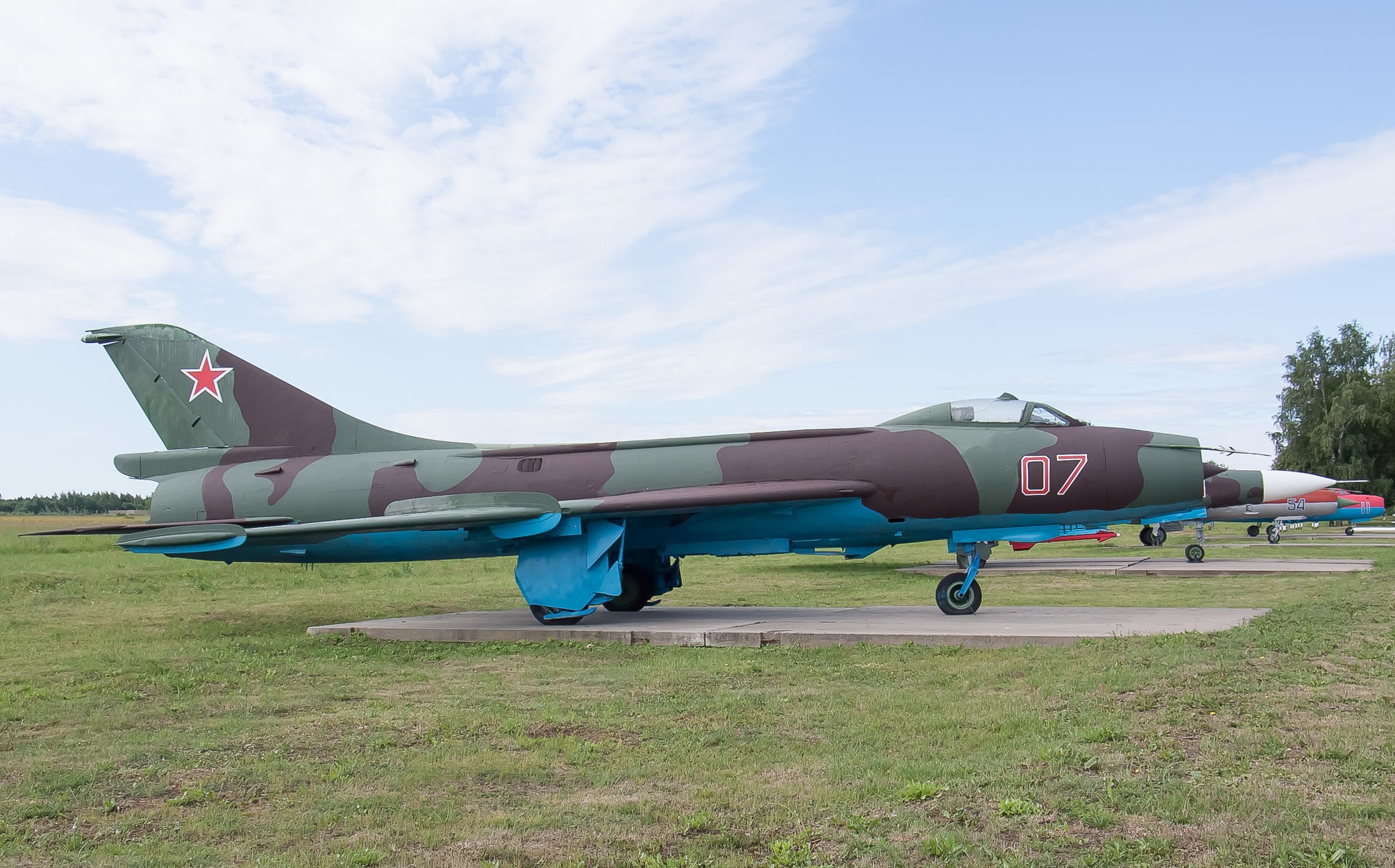
In 1958, an order was signed authorizing volume production of the new aircraft. Production versions were to be powered by the new R-11F-300 turbojet engine capable of producing over 12,500lbs of thrust in reheat. For this reason, the first production version was formally designated MiG-21F.
The MiG-21 was not formally given a name in Russian service but is widely known as the “balalaika” due to the distinctive triangular shape of its wings. Performance of the MiG-21F proved to be very good: it could achieve Mach 2 in level flight and Mach 1.1 at its maximum altitude of 70,000 feet.

Armament was two NR-30 cannons supplemented with an avionics pack that powered a gyro lead-computing gunsight. Early service testing showed no major problems with the new design. Not only was it significantly faster than earlier Soviet jets, it was simple, forgiving to fly, reliable and could be safely operated from airbases with unpaved runways.
Even before the first versions entered service, work began on a new version, the MiG-21F-13 which was capable of being armed with a pair of R-3S heat-seeking air-to-air missiles. Soon, a large number of improved MiG-21 variants provided with upgraded avionics and capable of being armed with air-to-air and air-to-ground ordnance began to appear.

Variants
The first significant derivative of the original design was the MiG-21PF, an all-weather version of this interceptor provided for the first time with fire-control radar.
The RP-21M radar used a single, conical parabolic antenna housed in the nose centre section. This allowed the detection of large (bomber) targets out to 20km and tracking from 15km. To maintain performance, the additional weight of the new radar installation was offset by the deletion of the two cannons.
An additional fuel tank, on top of the fuselage and behind the cockpit, was added to this version to increase endurance to 2½ hours. The MiG-21PF entered Russian service in 1962.

The MiG-21PFM was similar to the PF version, but included even larger internal fuel tanks and used a new KM- ejection seat and a two-piece canopy. This configuration was retained for all future MiG-21 variants.
The MiG-21R was similar to the PF variant but included the ability to carry a large under-fuselage pod equipped with cameras and other reconnaissance-gathering equipment as well as underwing drop tanks to provide increased range.
The MiG-21S featured even more powerful engines and new and more powerful avionics based on the RP-22S Sapfir-21 air-intercept radar suite. This version also included the addition of a single GSh-23L 23mm cannon pack and the ability to carry up to four air-to-air missiles (previous versions had been limited to just two missiles).

Read More: Tupolev Tu-128 Fiddler – The Bomber Sized Fighter
The MiG-21M was a further development of the S variant that added a large dorsal fuel tank in a spine above the fuselage. However, this was found to cause stability issues due to disrupted airflow over the tail surfaces, and this led to the development of the last main derivative, the MiG-21bis (improved).
The main feature of the bis version was the addition of a new Tumanskii R-25-300 engine, capable of producing over 15,000lbs of thrust in reheat with up to 21,000lbs available for short periods using emergency reheat.
This new engine gave this version vastly improved low-level performance, but increased weight slightly degraded the agility that had been a feature of all previous versions.

The bis featured the GSh-23L 23mm cannon pack and could be armed with up to six air-to-air missiles of the new and improved R-55 type as well as bombs and rocket pods when used in the ground attack role.
The bis variant was first used in Soviet service in 1972 and remained in production in Russia with few significant changes until 1985. Russia also produced several two-seat training variants of the MiG-21 as well as export versions based on existing variants.
In 1962, the Soviet Union and the People’s Republic of China signed a technology transfer agreement that related specifically to the MiG-21. This agreement allowed China to license-build a modified version of the MiG-21 as the Chengdu J-7.
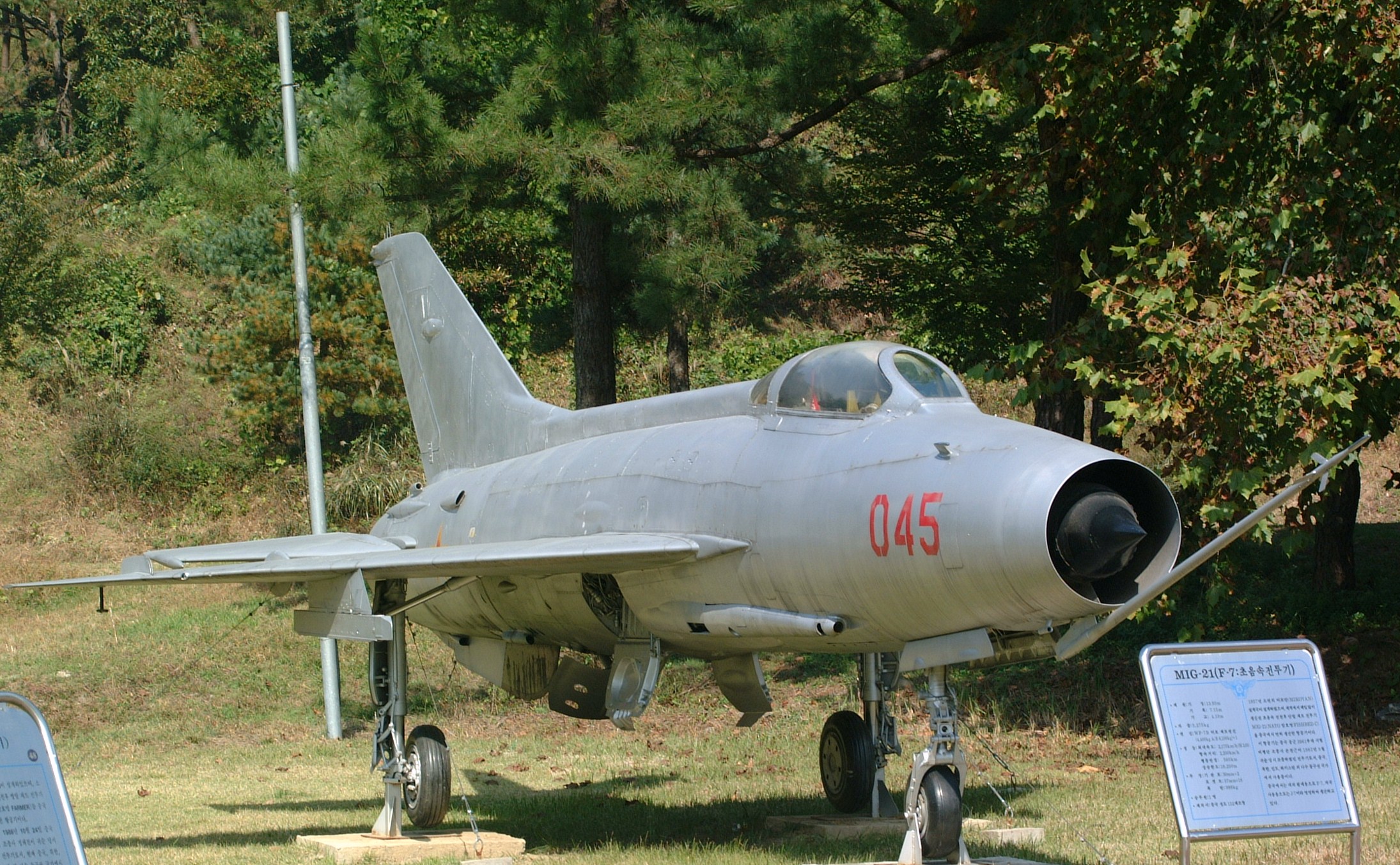
The main differences between this type and the original related to avionics, weapons systems, hydraulics and the fuel system, though externally the MiG-21 and the J-7 are virtually identical. Production of the J-7 in China continued with several upgrades until 2013.
Operational Use
The MiG-21 was never used operationally as an interceptor by the Soviet Air Force, but it saw air-to-air combat in a number of theatres around the world.
The first use in wartime of the MiG-21 occurred in 1965 during the Indo-Pakistan war. The Indian Air Force was equipped with eight MiG-21F-13 versions and these flew Combat Air Patrol (CAP) missions over the Indian/Pakistan border, though none were directly involved in combat.
The Mig-21 was used extensively by the Vietnamese People’s Air Force (VPAF), the air force of the Democratic Republic of Vietnam (North Vietnam) from 1965. During the conflict in Vietnam, these aircraft were used in combat against aircraft of the U.S. Air Force and Navy.
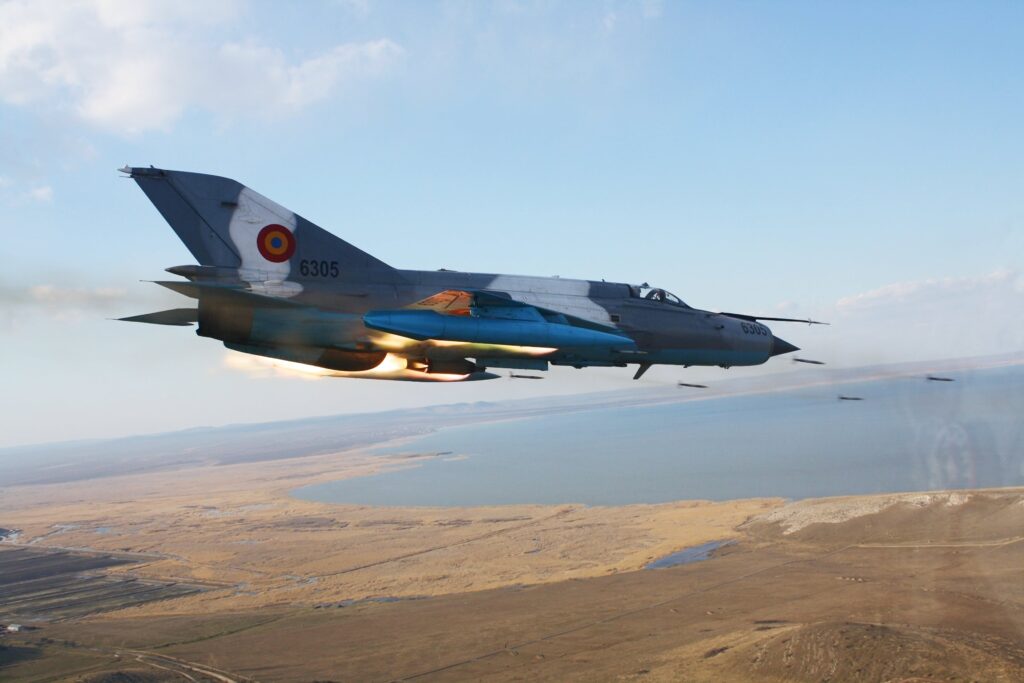
In April 1966, a VPAF MiG-21 was shot down by a U.S. Phantom F4. In June the same year, two U.S. F4s were shot down by MiG-21s using R-3S air-to-air missiles.
According to Soviet advisors with the VPAF, 34 MiG-21s were lost during the conflict in Vietnam while these aircraft were said to have shot down no less than 89 U.S. aircraft, though these figures for U.S. losses seem to be inflated compared to the actual number of U.S. combat aircraft lost.
However, there is no doubt that VPAF MiG-21s were able to shoot down a number of U.S. aircraft during the conflict in Vietnam.
The Soviet Union supplied large numbers of various types of MiG-21 to a number of Arab air forces from the early 1960s. The single most significant user of this type was the Egyptian Air Force, though MiG-21s were also provided to the Iraqi and Syrian Air Forces.

Read More: Northrop M2-F3 – The Wingless Plane
These types were used in combat during several Arab-Israeli conflicts between 1967 and 1979. The MiGs fared badly when fighting IAF Mirage and Phantom interceptors in early conflicts, mainly due to pilot training deficiencies rather than any inherent weakness in the MiG-21.
These aircraft were completely outclassed in 1979 at which time the IAF was equipped with U.S. F-15A Eagle and F-16A Fighting Falcon aircraft.
The only use of the MiG-21 in combat by the Soviet Union occurred during the invasion of Afghanistan (1979 – 1989). Several MiG-21 squadrons were deployed to Afghanistan, though all were used solely in the ground-attack role, mainly dropping 250kg and 500kg unguided fragmentation bombs, ZAB-360 napalm canisters and using 57mm rocket packs.

Soviet MiG-21s flew thousands of sorties in Afghanistan and the aircraft proved robust and effective in the ground attack role, though several were shot down by ground fire.
During the wars between Iran and Iraq, the Iraqi Air Force operated five squadrons of MiG-21s, but these were generally outclassed and outperformed in the air combat role by the F4Ds and F14s of the Iranian Air Force.
The last operational use of the MiG-21 occurred during the wars that followed the break-up of Yugoslavia in 1990.
Croatian MiG-21s were widely used in that conflict in the ground attack role up to 1995. Most of the surviving MiG-21s in the region were destroyed on the ground during the NATO bombing campaign in Kosovo in 1999.
How Many Countries Still Use MiG-21?
The MiG-21 has been used by 60 different countries since its introduction in 1955. Despite various models and substantial upgrades over the years, this aircraft is still in service in some countries today.
Conclusion
The MiG-21 is the most widely produced supersonic jet fighter of all time. Incredibly, small numbers of the original version and license-built copies remain in front-line service today.
Why was it so widely produced and why do some air forces continue to use a design that dates from the 1950s? Part of the answer lies in its inherent positive features: agility, simplicity, reliability and the ability to operate from unpaved runways.

However, probably the most significant factor is price. Even a well-used F16 will cost upwards of $15 million. A MiG-21bis can be purchased for less than $500,000 and it is significantly cheaper and simpler to operate than the F16.
Read More: Douglas X-3 Stiletto – The Flying Shoe
For a small nation looking to augment its combat air capacity, that still makes the MiG-21 an attractive proposition.
Even more important, and unlike many interceptors designed in the 1950s, the basic design of the MiG-21 proved capable of adaption to fulfil a range of roles including reconnaissance and ground-attack.
If a nation with limited funds chooses a primary weapon for its ground forces, the rugged, simple, cheap and readily available AK-47 and its derivatives are often the choice. For precisely the same reasons, the same nations are likely to choose the flexible MiG-21 over newer, but more complex and costly combat aircraft. Truly, the MiG-21 is the AK-47 of combat aviation.
If you like this article, then please follow us on Facebook and Instagram.
Specifications
- Crew: 1
- Length: 14.7 m (48 ft 3 in) excluding pitot boom
- Wingspan: 7.154 m (23 ft 6 in)
- Height: 4.1 m (13 ft 5 in)
- Max takeoff weight: 8,800 kg (19,401 lb)
- Powerplant: 1 × Tumansky R-25-300 afterburning turbojet, 40.18 kN (9,030 lbf) thrust dry, 69.58 kN (15,640 lbf) with afterburner
- Maximum speed: 2,175 km/h (1,351 mph) / M2.05 at 13,000 m (43,000 ft)
- Range: 660 km (410 mi, 360 nmi) clean at 11,000 m (36,089 ft)
- Service ceiling: 17,500 m (57,400 ft)
- Guns: 1 × internal 23mm Gryazev-Shipunov GSh-23L autocannon with 200 rounds
- Hardpoints: 5 (4 underwing + 1 ventral, reserved for fuel droptanks)

